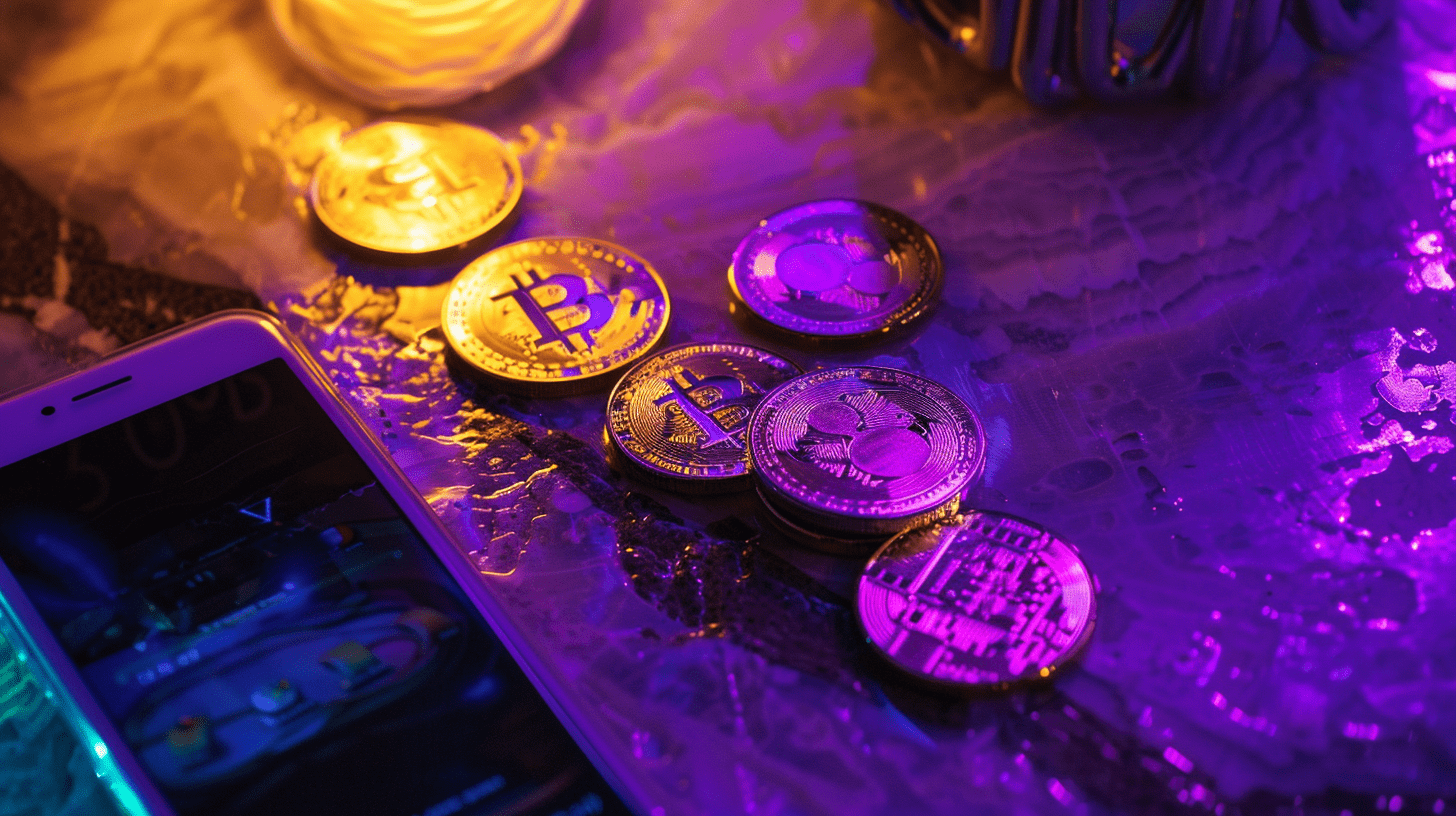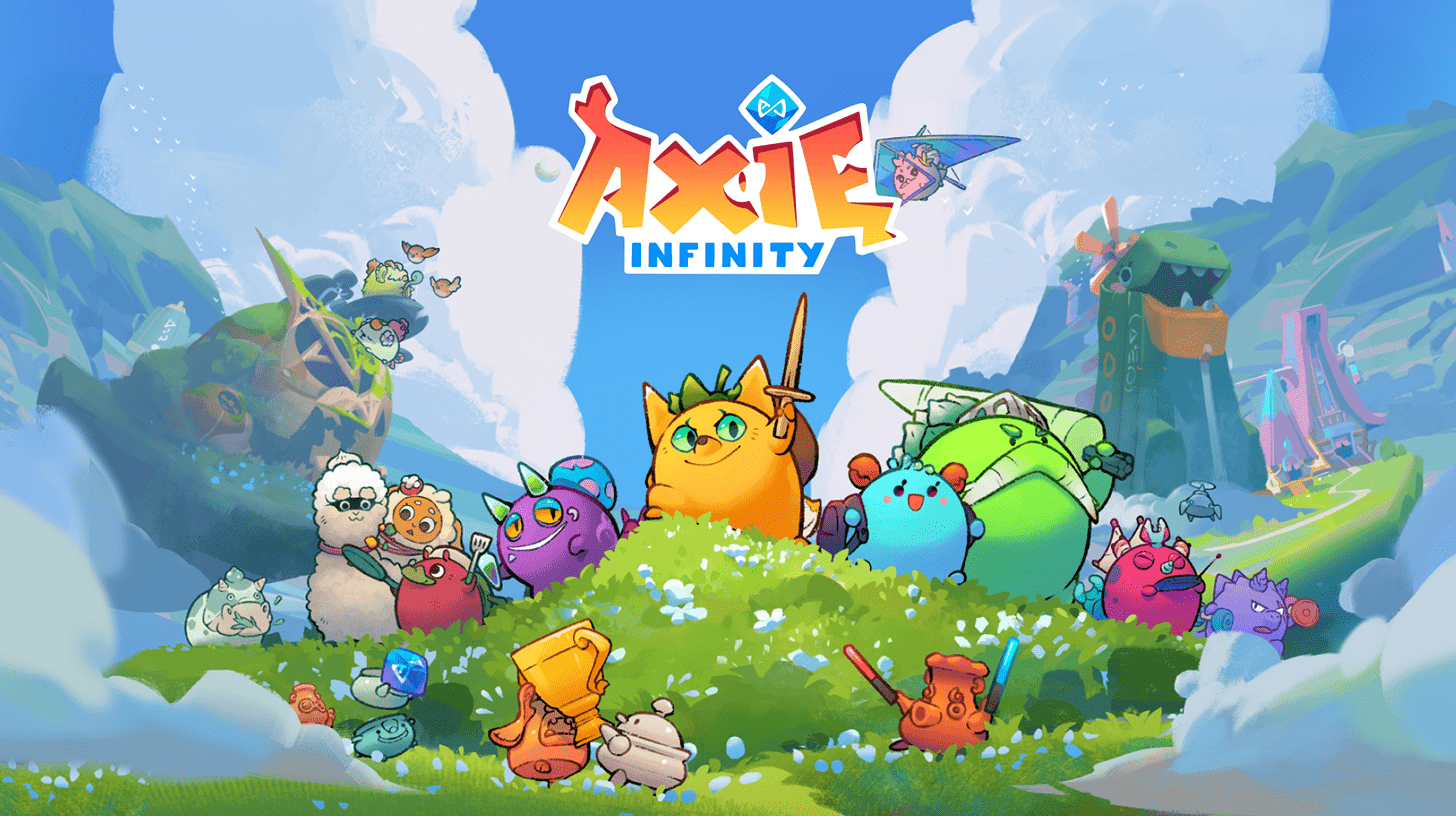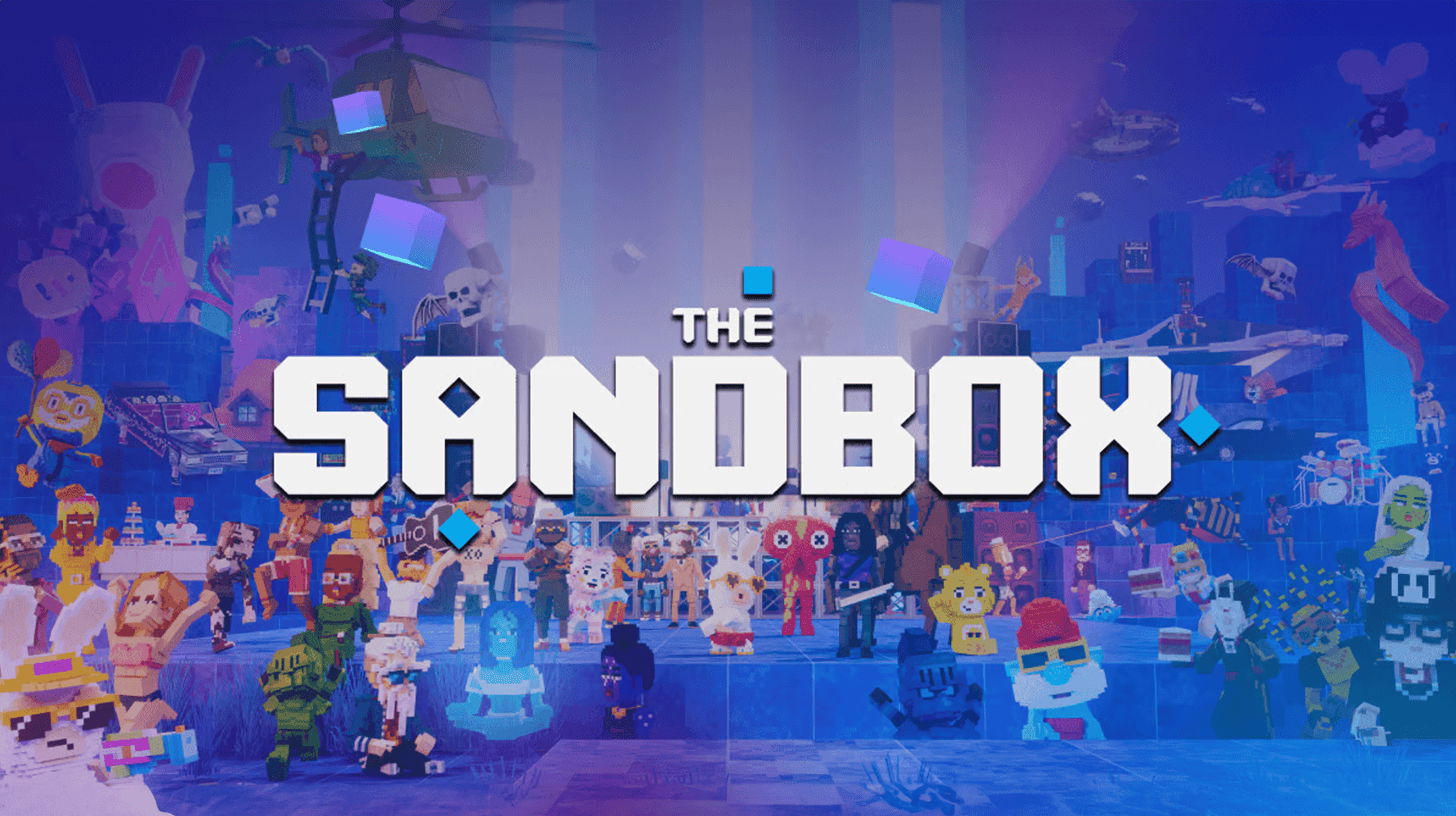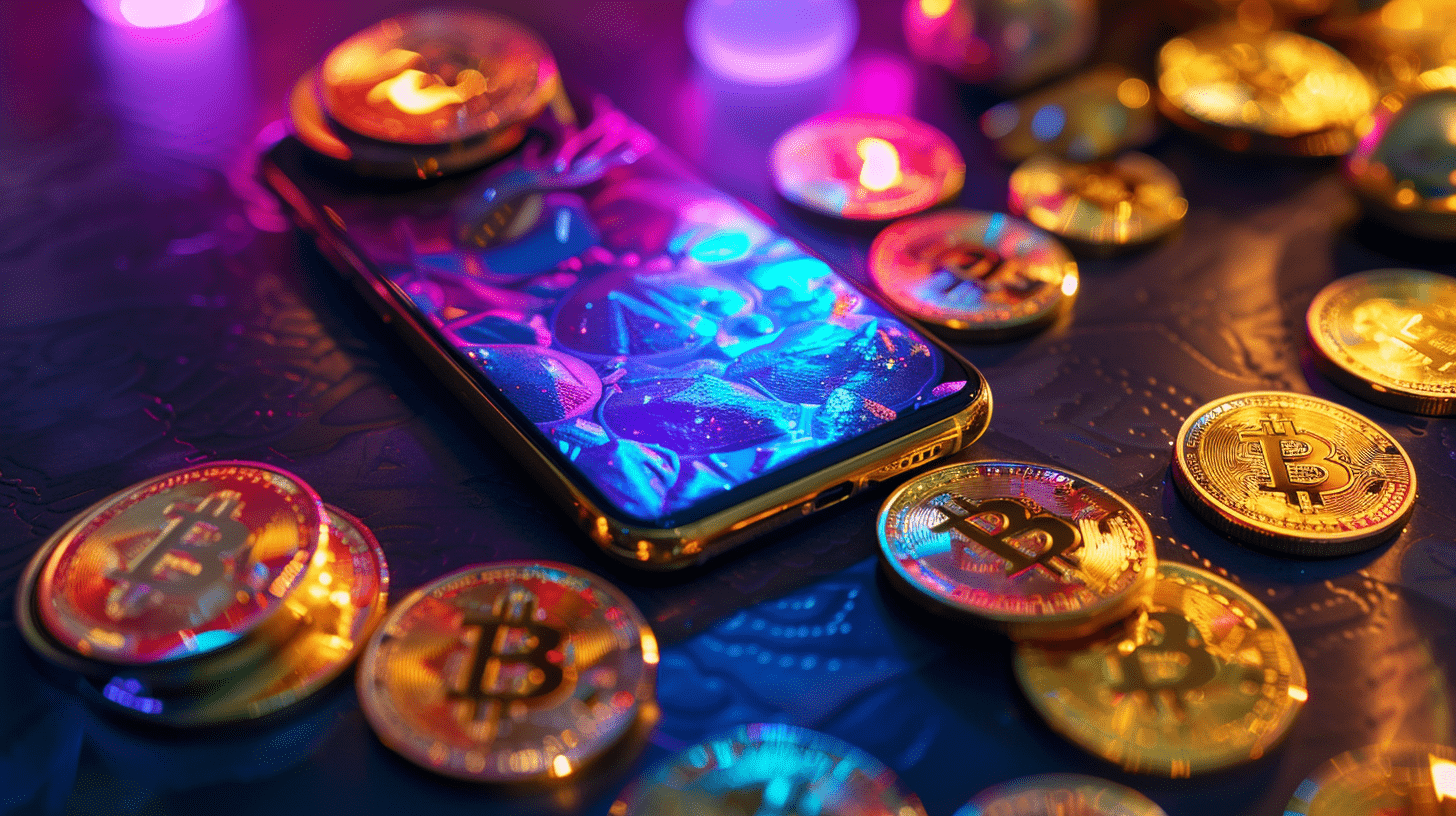From Gamers to Investors: How Crypto Games are Attracting a New Audience

The gaming landscape has undergone a significant transformation in recent years, driven by the rapid rise of crypto games. These innovative games leverage blockchain technology and cryptocurrencies to offer players not only entertainment but also financial opportunities. As a result, crypto games are attracting a diverse audience that includes both traditional gamers and investors.
What was once a pastime purely for fun has evolved into a dynamic space where players can earn real-world value through gameplay, turning their skills and time into tangible rewards. This shift has sparked the interest of a new demographic — those who see gaming as more than just a source of entertainment, but also as a viable investment opportunity.

The Intersection of Gaming and Investment
The advent of crypto games has created a unique convergence where entertainment and financial opportunities seamlessly blend. This intersection is reshaping the gaming landscape, offering players the chance to engage in immersive experiences while also exploring the potential for real-world financial gains.
How Crypto Games Combine Entertainment with Financial Opportunities
Crypto games are designed to be more than just a source of entertainment. By integrating blockchain technology and cryptocurrencies, these games provide players with opportunities to earn, trade, and invest within the gaming environment. Players can engage in traditional gaming activities like quests, battles, or building, but with the added incentive of earning cryptocurrency or valuable digital assets along the way. This dual focus on fun and financial reward is a key factor in the growing appeal of crypto games, attracting both gamers and investors to explore this new frontier.
The Role of Play-to-Earn Models in Attracting Gamers to Investment
One of the most significant developments in the crypto gaming space is the rise of play-to-earn (P2E) models. Unlike traditional games where players spend money on in-game purchases without any financial return, P2E games allow players to earn cryptocurrency as they play. These earnings can come from completing tasks, winning battles, or achieving milestones within the game. For many players, this model turns gaming from a hobby into a potential income stream, making the game not just a pastime but an investment opportunity. The ability to earn while playing is a powerful draw, enticing gamers to dive deeper into the financial aspects of the games they love.
The Appeal of Owning Digital Assets and Their Potential for Value Appreciation
Another major attraction of crypto games is the ownership of digital assets in the form of non-fungible tokens (NFTs). NFTs represent unique, verifiable ownership of digital items, such as characters, weapons, or virtual land within a game. Unlike traditional in-game items, which are owned and controlled by the game developers, NFTs are owned by the players themselves. This ownership is secured on the blockchain, allowing players to trade, sell, or hold their assets independently of the game’s ecosystem.
The potential for these digital assets to appreciate in value adds a compelling investment angle to the gaming experience. Rare or highly sought-after NFTs can increase in value over time, offering players the possibility of significant financial returns. This aspect of crypto gaming has attracted not only gamers but also collectors and investors who see the long-term value in these digital assets. As the market for NFTs grows, the intersection of gaming and investment becomes increasingly prominent, offering new avenues for both entertainment and profit.

The New Audience: From Gamers to Investors
The emergence of crypto games has not only revolutionized the gaming experience but has also expanded the audience beyond traditional players. This new audience is a diverse mix of traditional gamers, crypto enthusiasts, and investors, each bringing unique perspectives and motivations to the gaming landscape.
Profile of the New Audience: Traditional Gamers, Crypto Enthusiasts, and Investors
Traditional Gamers
These are players who have long been engaged in the gaming world, drawn by the immersive experiences, competitive challenges, and social aspects of gaming. For them, the appeal of crypto games lies in the added layer of earning potential. While they continue to seek enjoyment and entertainment, the ability to earn real-world value through gameplay adds a new dimension to their gaming activities.
Crypto Enthusiasts
This group consists of individuals who are already familiar with blockchain technology and cryptocurrencies. They are attracted to crypto games because of the integration of these technologies into the gaming world. For crypto enthusiasts, these games offer a new way to engage with the crypto ecosystem, allowing them to apply their knowledge of blockchain and digital assets in a more interactive and entertaining context.
Investors
The rise of crypto games has also attracted a new audience of investors who may not have been traditional gamers. These individuals are drawn by the potential for financial returns through the ownership of NFTs, participation in in-game economies, and the appreciation of digital assets. For investors, crypto games represent a novel investment opportunity where the line between gaming and finance is increasingly blurred.
The Shift in Mindset from Playing for Fun to Playing for Profit
The integration of financial incentives into gaming has led to a significant shift in how players approach their gaming experiences. For many, the traditional mindset of playing purely for fun is evolving into a more strategic approach, where the potential for profit plays a central role. This shift is particularly evident in play-to-earn games, where players are motivated not just by the enjoyment of the game but also by the opportunity to earn real-world rewards.
This change in mindset is transforming the gaming landscape, as players begin to view their in-game time as an investment. They are more likely to engage in activities that maximize their earning potential, such as participating in high-reward challenges, investing in valuable NFTs, or leveraging in-game economies to generate income. The blending of entertainment and profit-seeking behavior is creating a new hybrid gamer-investor, who is as focused on financial outcomes as they are on the gaming experience itself.
How Crypto Games Are Introducing Gamers to Investment Principles
Crypto games serve as a gateway for many players to explore the world of investment, often for the first time. Through the mechanics of these games, players are introduced to fundamental investment principles in an accessible and engaging way:
Risk and Reward
Players learn to balance risk and reward by making decisions about which in-game assets to acquire, when to trade or sell NFTs, and how to allocate their time and resources. These decisions mirror the considerations investors make in traditional markets, helping players develop an understanding of investment strategies.
Market Dynamics
In-game economies often reflect real-world market dynamics, with fluctuating values for digital assets, supply and demand, and market speculation. By participating in these economies, players gain insights into how markets function and the factors that influence asset prices.
Diversification
Just as in traditional investing, diversification is a key strategy in crypto gaming. Players are encouraged to spread their investments across different assets, games, or in-game activities to mitigate risk and maximize potential returns. This practice helps gamers understand the importance of diversifying their portfolios in the broader context of investment.
Long-Term Thinking
The potential for NFTs and other digital assets to appreciate in value over time encourages players to adopt a long-term perspective. Rather than seeking immediate gratification, they learn the benefits of holding valuable assets and patiently waiting for the right moment to capitalize on their investments.
Through these experiences, crypto games are not only providing entertainment but also educating players on essential investment principles. This dual role is helping to cultivate a new generation of gamer-investors who are equipped with the knowledge and skills to navigate both the gaming and financial worlds.

Crypto Games as Investment Platforms
Crypto games have evolved beyond simple entertainment to become sophisticated investment platforms. These games offer players the opportunity to engage in in-game economies that function much like real-world financial ecosystems, providing avenues for earning, trading, and investing in digital assets.
Overview of In-Game Economies and How They Function as Investment Ecosystems
In-game economies in crypto games are structured around digital currencies, assets, and markets, often mirroring the complexities of traditional financial systems. Players can earn in-game currency through various activities, such as completing quests, winning battles, or participating in events. This currency can then be used to purchase or upgrade assets, which might include characters, items, or virtual land, all of which are often represented as non-fungible tokens.
The value of these assets can fluctuate based on supply and demand, player activity, and external market conditions, creating an ecosystem where players can speculate, invest, and trade much like in traditional financial markets. These economies are decentralized, meaning that the ownership and transfer of assets are secured and verified by blockchain technology, which ensures transparency and fairness.
In this context, players are not just participants but also investors, making strategic decisions to maximize their returns. This setup transforms the gaming experience into a complex financial simulation where economic principles like scarcity, inflation, and market speculation come into play.
The Role of Governance Tokens, Staking, and Yield Farming in Crypto Games
Governance Tokens
Governance tokens are a crucial element in the investment ecosystem of crypto games. These tokens give holders the right to vote on important decisions regarding the game’s development, economy, and future direction. By holding and using governance tokens, players can influence game policies, such as changes in game mechanics, the introduction of new features, or the allocation of in-game resources. This democratic approach not only empowers players but also creates a direct financial incentive, as the value of governance tokens can increase based on the success and popularity of the game.
Staking
Staking involves locking up a certain amount of cryptocurrency or tokens in a game’s ecosystem to earn rewards, typically in the form of additional tokens or other in-game benefits. This process helps to stabilize the game’s economy by reducing the circulating supply of tokens, thereby potentially increasing their value. For players, staking offers a way to generate passive income while still participating in the game. It also incentivizes long-term commitment to the game, as stakers are often rewarded based on how long they keep their tokens locked in the system.
Yield Farming
Yield farming is another investment strategy that has made its way into crypto games. Players can earn returns by lending their in-game assets or tokens to others within the ecosystem. These returns can come in the form of interest, additional tokens, or other in-game benefits. Yield farming introduces a level of complexity to the game’s economy, allowing players to engage in more sophisticated financial strategies. It also provides a way for players to maximize their earnings by putting their idle assets to work within the game’s financial ecosystem.
Crypto games are not just entertainment platforms but sophisticated investment ecosystems where players can engage in various financial activities, from trading digital assets to staking and yield farming. These games offer unique opportunities for gamers and investors alike, blurring the lines between play and profit, and paving the way for a new era of interactive finance.

Attracting Investors Through Blockchain and NFTs
The integration of blockchain technology and non-fungible tokens into gaming has opened up new avenues for investment, attracting a diverse range of investors to the crypto gaming space. These technologies ensure transparency, security, and unique opportunities for digital ownership, making them highly appealing to those looking to invest in the digital future.
The Significance of Blockchain Technology in Ensuring Transparency and Security
Blockchain technology is the foundation upon which crypto games are built, offering a decentralized and immutable ledger that records all transactions and ownership of digital assets. This transparency is crucial for building trust within the gaming community and among investors. Every transaction, whether it involves purchasing in-game assets or transferring ownership of NFTs, is recorded on the blockchain, making it publicly accessible and verifiable.
This level of transparency ensures that players and investors can track the history of any asset, preventing fraud and providing assurance that their investments are secure. Additionally, the decentralized nature of blockchain means that no single entity controls the entire system, reducing the risk of manipulation and enhancing the overall security of the platform. This robust security framework is a significant factor in attracting investors, who can confidently participate in the market without fear of hidden risks or corruption.
How NFTs Offer Unique Investment Opportunities Through Digital Ownership
NFTs have revolutionized the concept of ownership in the digital realm, offering unique opportunities for investment that were previously unimaginable. Each NFT represents a one-of-a-kind digital asset, whether it's a character, item, or piece of virtual land, with its ownership securely recorded on the blockchain. Unlike traditional digital assets, which can be replicated or copied, NFTs are indivisible and irreplaceable, giving them intrinsic value.
For investors, NFTs present an opportunity to own and trade rare digital assets that can appreciate over time. The value of an NFT is often driven by its rarity, utility within a game, and demand within the community. This creates a dynamic market where investors can buy, sell, and hold NFTs much like physical collectibles or art. The potential for significant returns on investment has drawn attention from both traditional investors and new entrants to the crypto space, making NFTs a cornerstone of the growing digital economy.
Case Studies of Successful NFT Investments Within Crypto Games

Axie Infinity
Axie Infinity has become a leading example of how NFTs can generate significant returns for investors. The game features unique creatures called Axies, each represented as an NFT. These Axies can be bred, battled, and traded within the game, with some rare Axies selling for thousands of dollars. Early investors who purchased Axies have seen substantial returns as the game's popularity surged, driving up the value of these digital creatures. The success of Axie Infinity's NFT market has not only attracted gamers but also serious investors looking to capitalize on the burgeoning market for digital collectibles.

CryptoPunks
Although not a game in the traditional sense, CryptoPunks has had a significant impact on the NFT market within the gaming and digital art communities. CryptoPunks are 10,000 unique, algorithmically generated characters that have become highly sought after as digital collectibles. Their value has skyrocketed, with some selling for millions of dollars. The success of CryptoPunks has demonstrated the potential for NFTs to serve as valuable investment assets, influencing the development of NFT markets in crypto games.

The Sandbox
The Sandbox is a virtual world that allows players to buy, develop, and monetize parcels of virtual land, represented as NFTs. Investors have flocked to The Sandbox to purchase virtual real estate, betting on the long-term value of these digital properties. High-profile sales, including the purchase of land by major brands and celebrities, have driven up prices and showcased the potential for significant returns. The success of The Sandbox's NFT-based real estate market highlights how virtual assets can be just as valuable — and sometimes even more so — than physical assets.
The combination of blockchain technology and NFTs has created a new frontier for investment in the digital world. By ensuring transparency, security, and unique ownership opportunities, these technologies have attracted a wide range of investors to the crypto gaming space. Successful case studies, such as Axie Infinity and The Sandbox, illustrate the significant potential for NFTs to generate returns, solidifying their role as a key asset class in the future of gaming and digital economies.

Risks and Considerations for Investors
Investing in crypto games presents unique opportunities but also comes with significant risks that must be carefully managed. The volatility of crypto markets, coupled with the emerging nature of the gaming sector, can lead to substantial fluctuations in value and unforeseen challenges. Understanding these risks and implementing strategies to mitigate them is crucial for any investor looking to enter this space.
The Volatility of Crypto Markets and Its Impact on Game Economies
One of the most prominent risks in crypto gaming investments is the inherent volatility of cryptocurrency markets. The value of in-game currencies, NFTs, and other digital assets is closely tied to broader crypto market trends. Sharp price swings in major cryptocurrencies like Bitcoin or Ethereum can have a ripple effect on the entire ecosystem, including the in-game economies of crypto games.
This volatility can lead to sudden increases or decreases in the value of digital assets, impacting both players and investors. For example, a game’s native token might experience rapid price appreciation, leading to a surge in asset values. Conversely, a market downturn could significantly devalue these assets, eroding potential profits and even leading to losses. Investors must be prepared for this unpredictability and understand that the value of their investments can fluctuate dramatically over short periods.
The Importance of Conducting Thorough Research Before Investing in Crypto Games
Given the speculative nature of crypto games, conducting thorough research before investing is essential. This includes understanding the game's mechanics, the team behind it, the technology it uses, and the overall market sentiment. Investors should evaluate the game’s whitepaper, review community feedback, and consider the long-term viability of the game’s economy.
It's also important to assess the project's roadmap and how well the development team has delivered on its promises so far. A game that shows consistent progress and community engagement is more likely to succeed than one with unclear goals or frequent delays. Additionally, researching the regulatory environment in which the game operates can help investors anticipate potential legal issues that could affect the game's success and, consequently, their investments.
Strategies for Managing Risks in the Volatile World of Crypto Gaming Investments
To navigate the risks associated with crypto gaming investments, investors should adopt several risk management strategies:
Diversification
One of the most effective ways to manage risk is by diversifying investments across multiple games and asset types. By spreading investments, investors can reduce the impact of a downturn in any single game or asset. Diversification also allows for exposure to various segments of the crypto gaming market, increasing the potential for returns while mitigating risks.
Start Small
Especially for those new to the space, it's wise to start with a small investment to gain a better understanding of the market dynamics. This approach minimizes potential losses while allowing the investor to learn and adapt their strategies over time. As confidence and knowledge grow, investments can be scaled up accordingly.
Stay Informed
Keeping up-to-date with the latest developments in the crypto gaming and broader cryptocurrency markets is crucial. Market conditions can change rapidly, and being informed allows investors to make timely decisions. Joining communities, following industry news, and participating in discussions can provide valuable insights and early warnings about potential risks.
Risk-Reward Assessment
Investors should regularly assess the risk-reward ratio of their investments. This involves evaluating the potential return on investment (ROI) against the level of risk involved. High-risk investments might offer the potential for significant returns, but they should only be a small portion of a well-diversified portfolio.
Use of Stop-Loss Orders
For those trading in-game tokens on exchanges, implementing stop-loss orders can help protect against significant losses. A stop-loss order automatically sells a token when it reaches a predetermined price, helping to minimize losses during sudden market downturns.
Consider the Long-Term
While the crypto gaming market can be highly volatile, investors who adopt a long-term perspective may be better positioned to weather short-term fluctuations. Focusing on games with strong fundamentals and staying committed through market cycles can lead to more sustainable returns.
While the world of crypto gaming offers exciting investment opportunities, it also comes with considerable risks. By understanding the volatility of crypto markets, conducting thorough research, and implementing strategic risk management practices, investors can better navigate the challenges and maximize their potential for success in this emerging field.

The Future of Crypto Gaming and Investment
The crypto gaming industry is poised for significant growth as it continues to merge the worlds of entertainment and finance. As these games evolve, they are expected to offer even more sophisticated investment opportunities, attracting a broader range of participants from both the gaming and financial sectors.
Predictions for the Continued Growth of Crypto Games as Investment Vehicles
The future of crypto gaming looks promising, with many experts predicting continued expansion as these games become more sophisticated and widespread. As blockchain technology advances and becomes more accessible, the barriers to entry for both players and investors are likely to decrease, leading to greater adoption. The play-to-earn model, which allows players to earn real-world value through gameplay, is expected to remain a significant driver of this growth. As more players and investors recognize the potential of crypto games as investment vehicles, the market for these games is likely to expand, with increasing liquidity and more robust in-game economies.
Additionally, as the crypto gaming industry matures, we can expect to see a diversification of investment opportunities. This could include games targeting different demographics, with varying levels of complexity and risk, allowing investors to tailor their portfolios according to their preferences and risk tolerance. The integration of new technologies, such as virtual reality (VR) and artificial intelligence (AI), could further enhance the gaming experience, making these platforms even more attractive to investors.
The Potential for More Sophisticated Financial Products Within Games
As crypto games evolve, there is significant potential for the introduction of more sophisticated financial products within these virtual ecosystems. Decentralized exchanges (DEXs) within games could allow players to trade in-game assets and tokens directly with each other, without the need for centralized intermediaries. This could lead to more efficient markets and provide players with greater control over their investments.
In addition to DEXs, we may see the development of in-game lending platforms, where players can borrow or lend digital assets, earning interest or gaining access to resources they need to advance in the game. These lending platforms could be integrated with the broader decentralized finance (DeFi) ecosystem, allowing players to leverage their in-game assets as collateral for loans or to participate in yield farming opportunities.
The potential for staking and yield farming within games is also significant. By staking their in-game tokens, players could earn rewards or interest, contributing to the overall stability and growth of the game’s economy. Yield farming opportunities could attract more sophisticated investors, providing additional revenue streams and increasing the financialization of the gaming experience.
The Evolving Relationship Between Traditional Gaming Companies and the Crypto Gaming Industry
As the crypto gaming industry grows, the relationship between traditional gaming companies and the emerging crypto gaming sector is likely to evolve. Initially, many traditional gaming companies were skeptical of blockchain technology and its integration into gaming. However, as the success of crypto games becomes more apparent, we are beginning to see a shift in this perspective.
Some traditional gaming companies are starting to explore the integration of blockchain technology into their games, either through partnerships with existing crypto gaming platforms or by developing their own blockchain-based games. This collaboration could lead to the creation of hybrid games that combine the best elements of traditional gaming with the innovative features of crypto gaming, such as digital ownership and decentralized economies.
Moreover, as traditional gaming companies recognize the revenue potential of in-game transactions and NFTs, they may begin to adopt these technologies to enhance player engagement and create new monetization opportunities. This could lead to a blurring of the lines between traditional and crypto gaming, with players seamlessly transitioning between the two worlds.
In the long term, we could see the emergence of a more unified gaming industry, where blockchain technology is an integral part of the gaming experience. This integration could lead to new business models, such as games-as-a-service (GaaS), where players subscribe to games that offer continuous updates and content, supported by blockchain-based microtransactions and digital asset ownership.
The future of crypto gaming and investment is bright, with significant potential for growth and innovation. As these games continue to evolve, they are likely to offer more sophisticated financial products, attracting a broader audience of both gamers and investors. The relationship between traditional gaming companies and the crypto gaming industry will continue to evolve, leading to new opportunities and challenges for all stakeholders involved.

Conclusion
The fusion of gaming and investment through crypto games has opened up exciting new opportunities, attracting a diverse audience that includes both traditional gamers and investors. By integrating blockchain technology, NFTs, and decentralized finance into gameplay, these games have transformed from mere entertainment platforms into sophisticated investment ecosystems. The rise of play-to-earn models and the ownership of digital assets have blurred the lines between gaming and financial participation, creating a new breed of gamer-investors.
As we look to the future, the potential of crypto games to revolutionize the gaming industry is undeniable. These platforms not only provide entertainment but also offer tangible financial rewards, making them attractive to a wide range of participants. The ongoing evolution of in-game economies, the development of more sophisticated financial products, and the growing collaboration between traditional gaming companies and the crypto sector will continue to shape this dynamic landscape.
Crypto games are redefining what it means to play and invest, merging fun with financial opportunity. As the industry matures, it will be fascinating to watch how these dual aspects of gaming — entertainment and investment — continue to intertwine and evolve, creating new possibilities for players and investors alike.
